Helical glass cut attempt
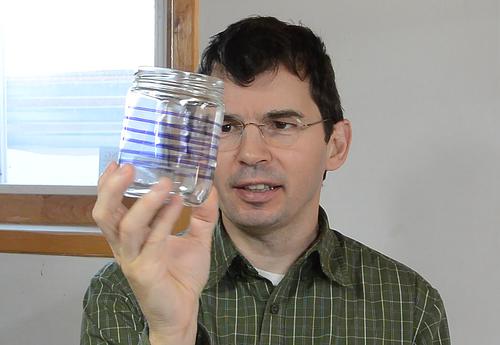 I previously cut some beer bottles in half by scoring a line with a glass cutter and then
using temperature cycling to get the crack to go all the way through the glass.
I previously cut some beer bottles in half by scoring a line with a glass cutter and then
using temperature cycling to get the crack to go all the way through the glass.
But I had the crazy idea of trying to make a sort of "spring" out of glass by making a helical cut in a bottle. I didn't have any suitable bottles handy, so I used some glass jars.
For flat pieces of glass, cutting consists of scoring a line with a glass cutter, then trying to "bend" the glass along the scored line, which causes the crack started by the score to go all the way through the glass, breaking it apart. But for a jar or a bottle, there's no way to just "bend" it. However thermal stress can be used to get the score to form a crack through the glass.
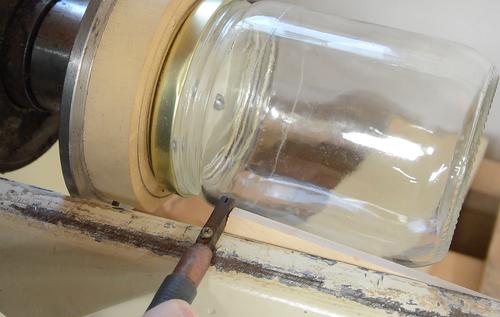
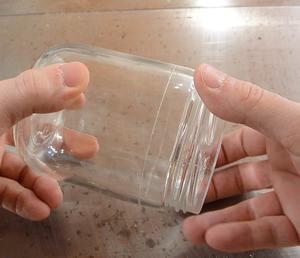 I figured I should make sure my process works well enough by first cutting a jar in two.
I figured I should make sure my process works well enough by first cutting a jar in two.
I screwed the lid from one of the jars to the face plate of my lathe, then used a glass cutter to score a line all the way around.
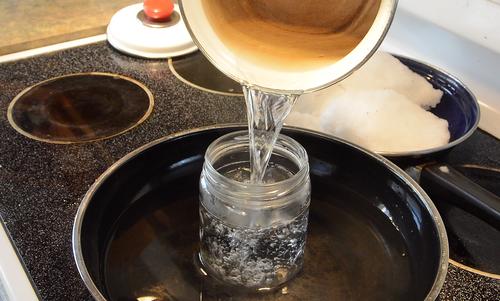 I then poured some boiling hot water into the jar to stress it. With the
inside surface of the glass hot and the outside surface still cool, thermal expansion
should cause tension on the outside surface (where the score line is),
which should cause the crack to go deeper.
I then poured some boiling hot water into the jar to stress it. With the
inside surface of the glass hot and the outside surface still cool, thermal expansion
should cause tension on the outside surface (where the score line is),
which should cause the crack to go deeper.
I did this with the jar standing in some warm water to avoid shocking the bottom too much. If you pour boiling water into a cold jar it's not unusual for the bottom to pop right off.
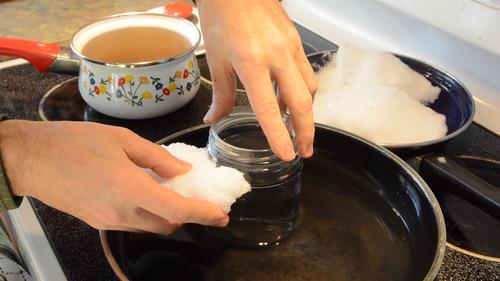 The hot water alone wasn't enough to crack the glass. So I cooled it along the
scored line with some snow. But that wasn't enough to break it either.
The hot water alone wasn't enough to crack the glass. So I cooled it along the
scored line with some snow. But that wasn't enough to break it either.
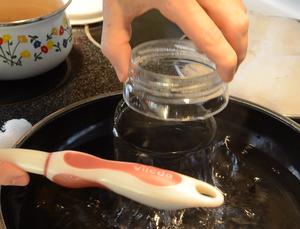 Then I tapped it with the handle of a dish brush to get the crack to go all the way through.
Then I tapped it with the handle of a dish brush to get the crack to go all the way through.
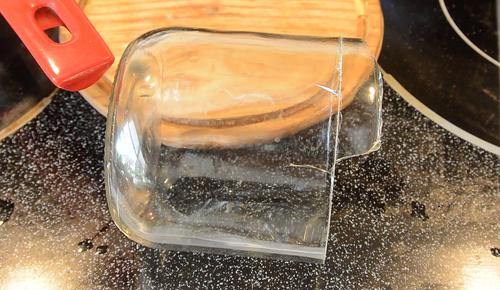 Here's the result of my first attempt. It didn't break along the whole scored line,
and some cracks went down from the line. Not a success.
Here's the result of my first attempt. It didn't break along the whole scored line,
and some cracks went down from the line. Not a success.
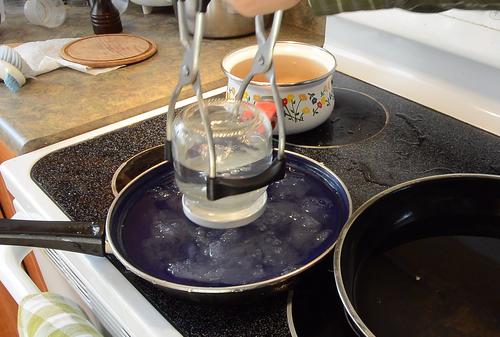 For my next attempt, after pouring in the boiling hot water I put a lid on the jar
and put it upside-down in some ice water to cool the outside surface. But that
wasn't enough to break it.
For my next attempt, after pouring in the boiling hot water I put a lid on the jar
and put it upside-down in some ice water to cool the outside surface. But that
wasn't enough to break it.
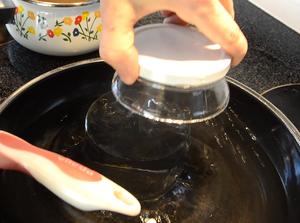 But a little bit of tapping got it to break apart.
But a little bit of tapping got it to break apart.
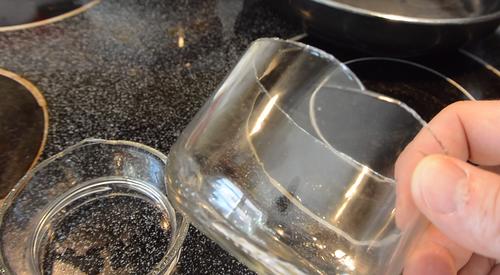 This one went much better, but the crack went astray in one spot. Still not good enough.
This one went much better, but the crack went astray in one spot. Still not good enough.
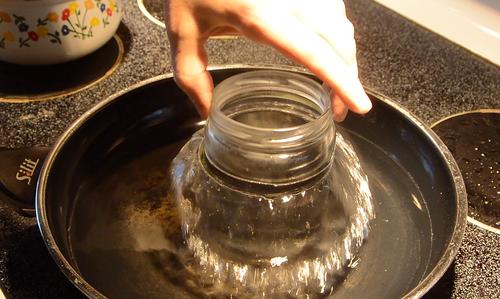 Third attempt. This one made a distinct 'pop' when I poured the hot
water in, and I could lift the top right off the jar. A successful
experiment.
Third attempt. This one made a distinct 'pop' when I poured the hot
water in, and I could lift the top right off the jar. A successful
experiment.
What did I do different this time? Maybe it was because the scored line was a bit further from the top of the jar. Or maybe I poured in the boiling water slow enough that it didn't slosh around as much. Or it could be that this was just a better glass jar. I was starting to give up on the spiral cut idea, but after this one, I figured it was still worth a try.
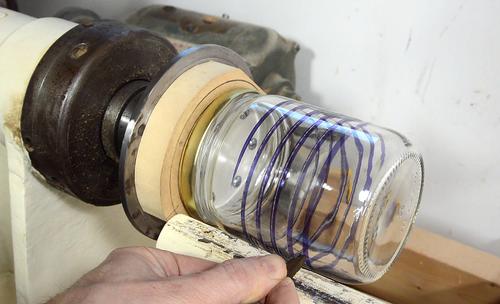
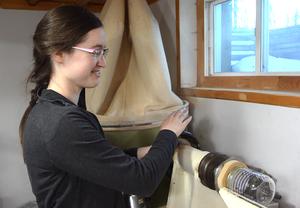 I needed a slow steady rotation to make the score along the
whole helical path.
So I recruited Rachel to do the turning while I followed the line with a
glass cutter. I was pleased with how consistent I was able to follow
the marked line with the glass cutter.
I needed a slow steady rotation to make the score along the
whole helical path.
So I recruited Rachel to do the turning while I followed the line with a
glass cutter. I was pleased with how consistent I was able to follow
the marked line with the glass cutter.
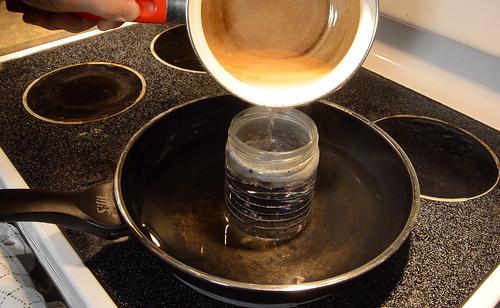 Boiling water in, as usual. I could hear the glass cracking. For a moment it looked
like It worked.
Boiling water in, as usual. I could hear the glass cracking. For a moment it looked
like It worked.
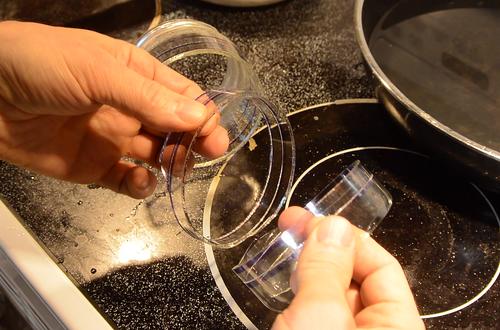 Pulling it apart, I had a lot of cracks along the scored lines, but also some cracks
in between, and not all the scored lines had a crack in them.
Pulling it apart, I had a lot of cracks along the scored lines, but also some cracks
in between, and not all the scored lines had a crack in them.
I think the helix was too ambitious. But cutting the bottle into a series of rings 2 cm or wider might be doable.
At this point, I already broke all the jars I cared to break, and even if I was successful, a jar with a helical cut would be very fragile and not at all useful.
But I hope this encourages you to try to cut a bottle, if, for whatever reason, you want to cut one in half. For example, for making tumblers out of beer bottles.
See also:
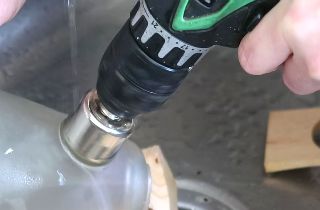 Drilling glass (video only)
Drilling glass (video only)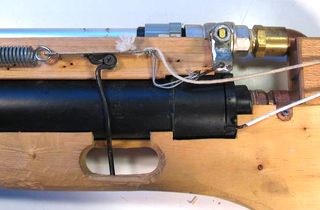 Homemade marble
Homemade marbleshooting air gun
Back to my Woodworking website.
 Bipod/tripod from
Bipod/tripod from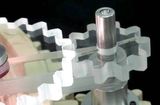 Making Plexiglass gears
Making Plexiglass gears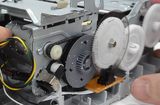 Tearing down an HP inkjet printer
Tearing down an HP inkjet printer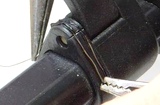 Fixing broken plastic parts
Fixing broken plastic parts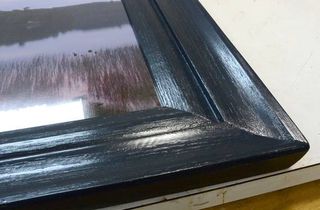 Making a picture frame
Making a picture frame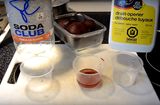 Kitchen chemistry experiment
Kitchen chemistry experiment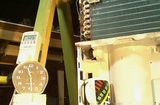 The mysterious leaking dehumidifier
The mysterious leaking dehumidifier